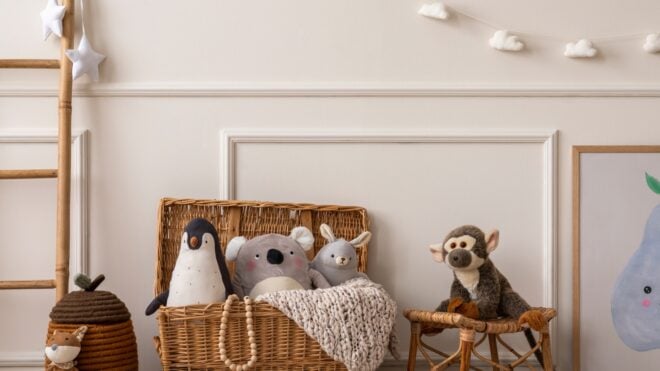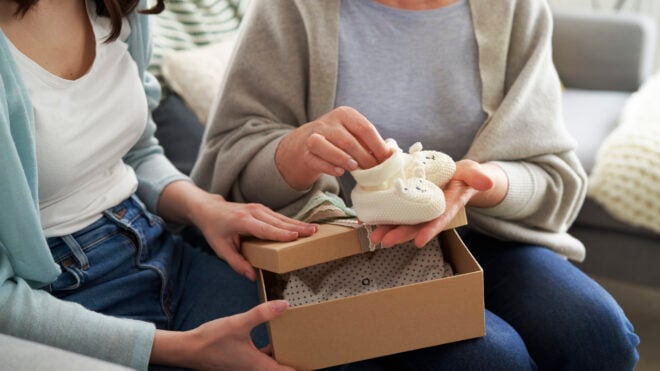The Next Chapter
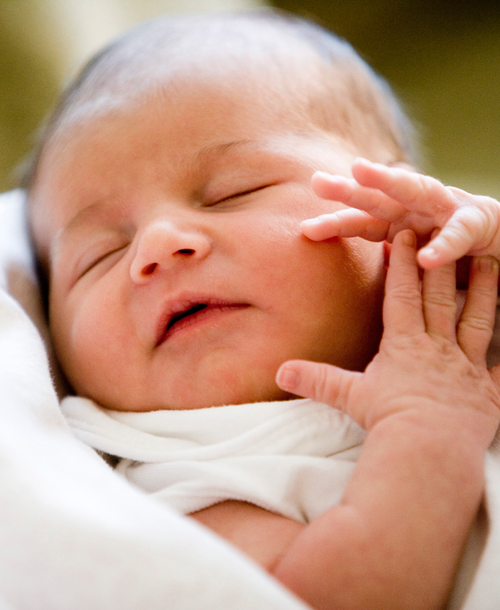
You handled pregnancy like a pro, created a perfect nursery, and persevered with honor through the delivery. Now comes the real—and best—part: seeing your baby through her first few weeks of life. As new moms and dads, mastering some key baby tips and developmental milestones will serve you well on your child-rearing journey. And the best part about the trip? It's only just beginning.
Heads Up
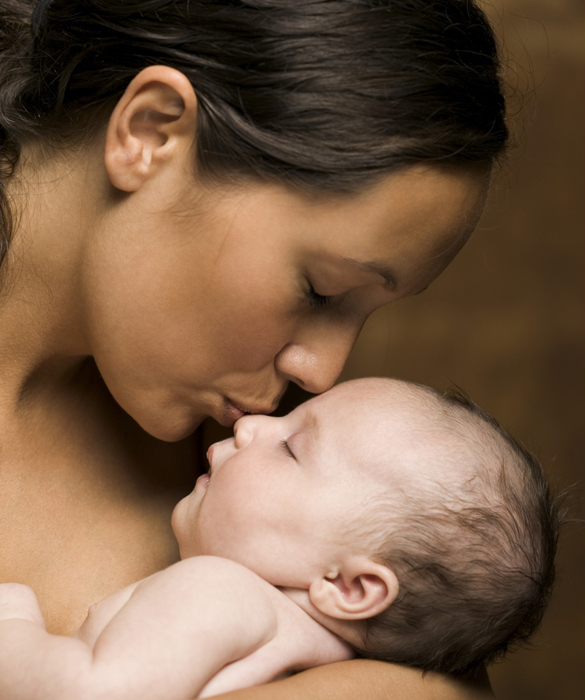
Your baby's head is the most vulnerable part of his body, so remember to protect it and his neck when holding him. Newborns have two soft spots, called fontanelles, on the back and top of the head where the skull hasn't completely fused. The back fontanelle usually closes in two months, and the top typically closes by 19 months old, according to the National Institutes of Health.
Feeding
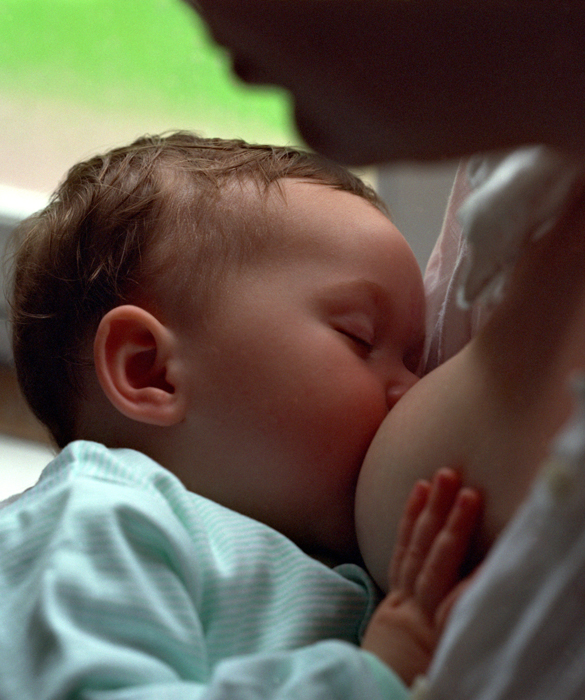
If you're breast-feeding, you should feed about 12 times a day, or eight times a day if bottle feeding, says Los Angeles pediatrician Dr. Harvey Karp, author of the book and DVD The Happiest Baby on the Block. Generally, that means breast-fed babies should eat every two or three hours, but keep in mind that some infants feed more during the day, Karp says. When breast-feeding, wait a week or two to ensure nursing is going well before switching to a bottle with pumped breast milk, he adds.
Bathing
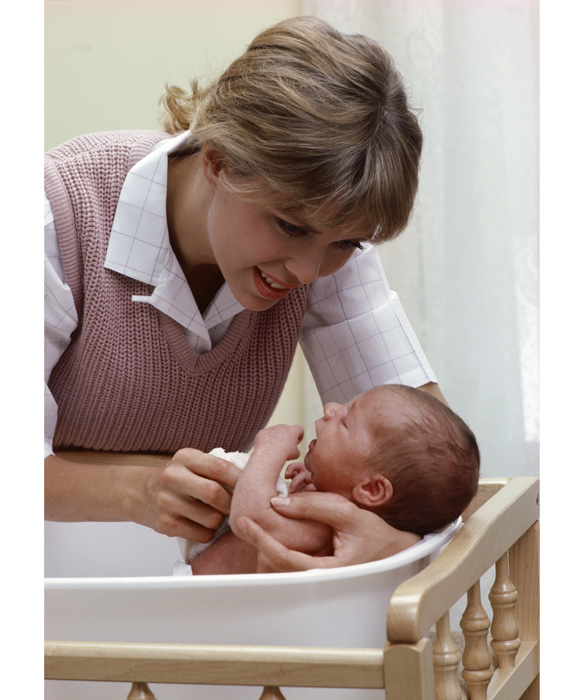
Bathtime is a way to relax and soothe your infant. Parents should bathe children younger than 1 year no more than three times a week because soap can dry out a baby's delicate skin, says the American Academy of Pediatrics. So long as you keep their bottoms clean during diaper changes and moisturize with hypoallergenic lotion after each bath, your baby will be fine with three baths a week. The academy also recommends that parents sponge-bathe infants until their umbilical cord stumps dry up.
The Umbilical Stump and Other Parts
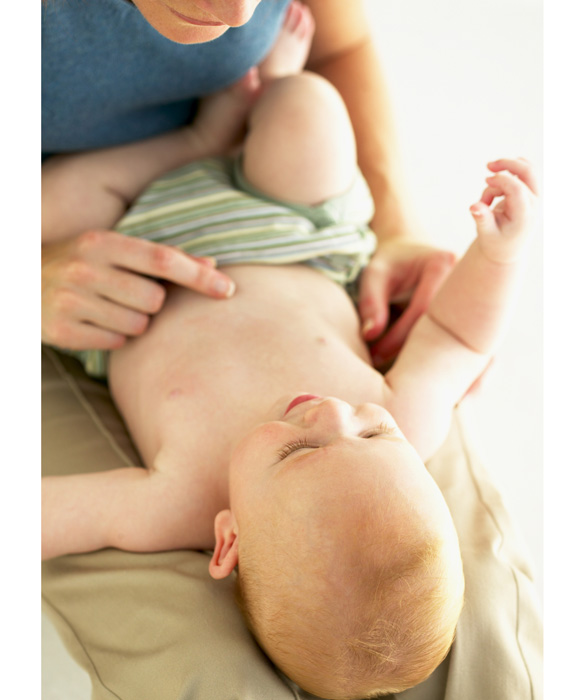
The umbilical cord typically dries up and falls off by 8 weeks old, according to the American Academy of Pediatrics. It's important to keep the stump dry while it heals by folding your baby's diaper below the cord. If your baby boy was circumcised, the tip of the penis may be red or have a yellow secretion after the procedure that should go away in a week. Clean the penis and change the bandages at each diaper change and apply petroleum jelly to prevent irritation, the American Academy of Pediatrics advises.
Poo
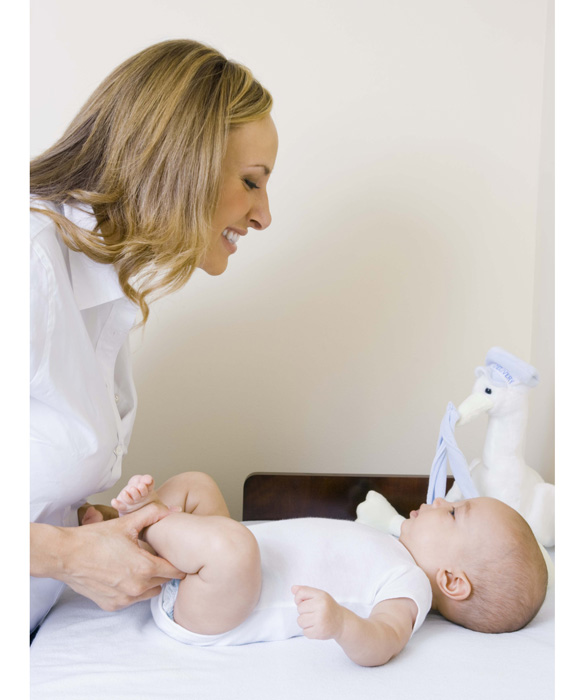
Your baby's first few stools will be an odorless black substance known as meconium. Once feeding begins, bacteria will enter the intestines, and your baby will have her first bowel movements. Her stool will then change from meconium to green, yellow or brown poo. If her stools are white or red, contact your doctor; it could be an indication of liver disease or blood in the stool, according to the American Academy of Pediatrics.
Sleeping
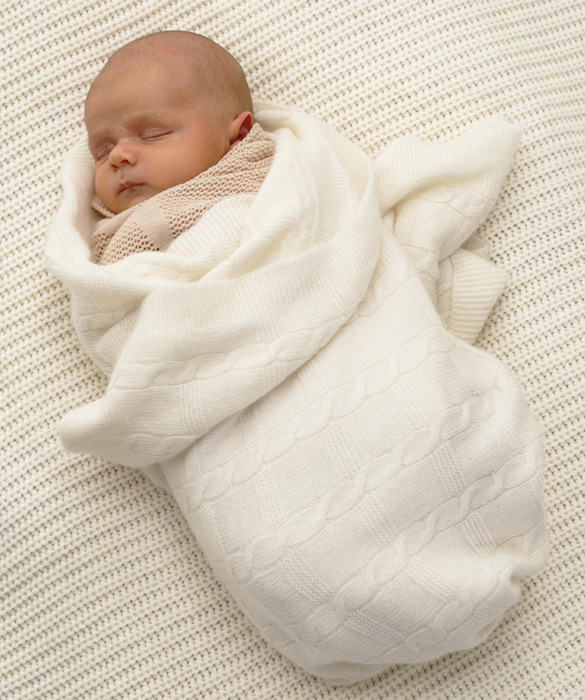
Newborns generally sleep about 14 hours a day on average, Karp says. Swaddling your baby is an ideal way to promote sleep; just make sure that his arms are down snugly and that his hips are able to bend, he adds. Always check to make sure that your baby isn't getting overheated.
Crying
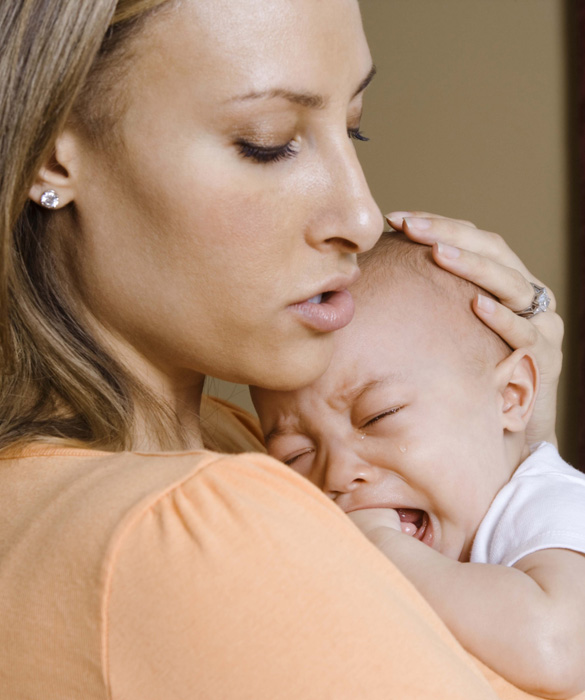
When your baby cries, check the diaper and change if necessary, or rock or feed her. But if none of those help, there are other ways to calm her, Karp says. To remember them, he's created the Five S's: swaddling, holding her on the side or stomach, making shushing sounds, providing a swinging or rhythmic motion, and sucking at the breast. "Lying on the back is the worst position for calming a baby," Karp says. However, when it's time for bed, always place her on her back.
First Sights and Sounds
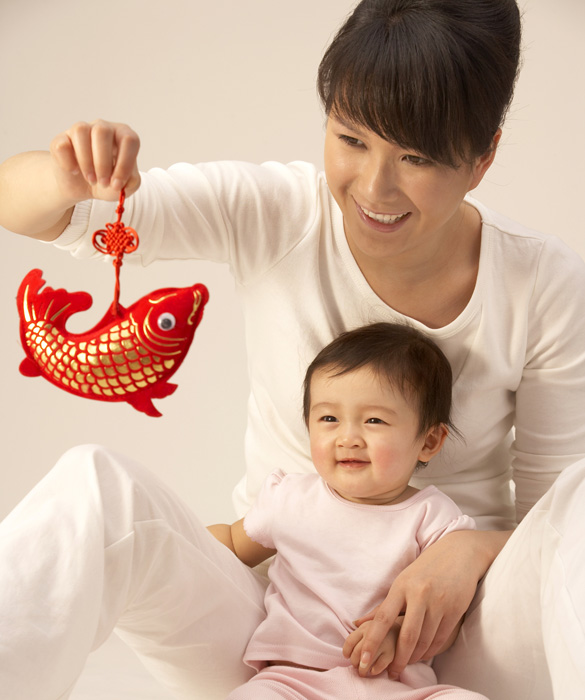
Babies can hear at birth, and a good sign of normal hearing development is if your baby startles at sudden loud noises, says Dr. Sara Lappe, of the Cleveland Clinic. In the first few days of life, your baby's eyesight will be blurry, but she will soon start to focus on things within an arm's length away. In the first month, colors are hard to distinguish, so have toys with contrasting colors. Red is the first color she will see, and that happens within a couple of months, Lappe adds.
Nails
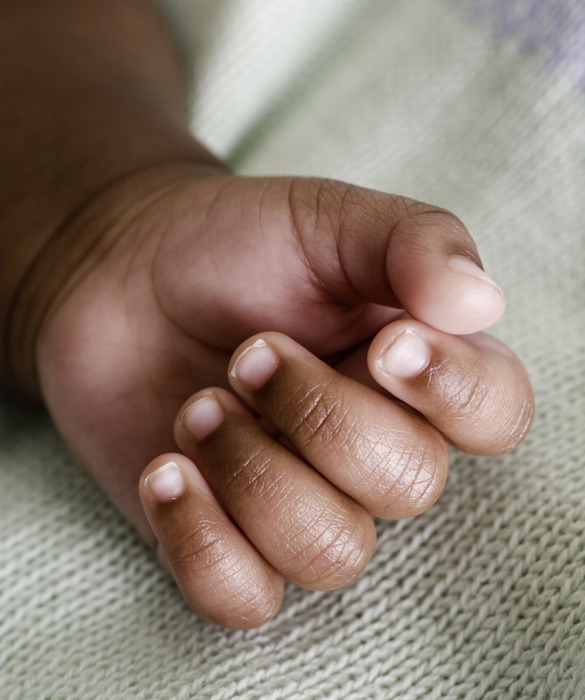
Your baby's fingernails will grow a lot faster than your own, so try to trim his nails at least once or twice a week to prevent self-scratching. Since infants move so much, it may help to do it while he's asleep, the American Academy of Pediatrics recommends. Use specially designed scissors, clippers and emery boards, and be careful not to cut too close or else you risk cutting your baby's fingers. Toenails grow slower than fingernails, so they don't need to be maintained as much, the academy adds.
Cradle Cap
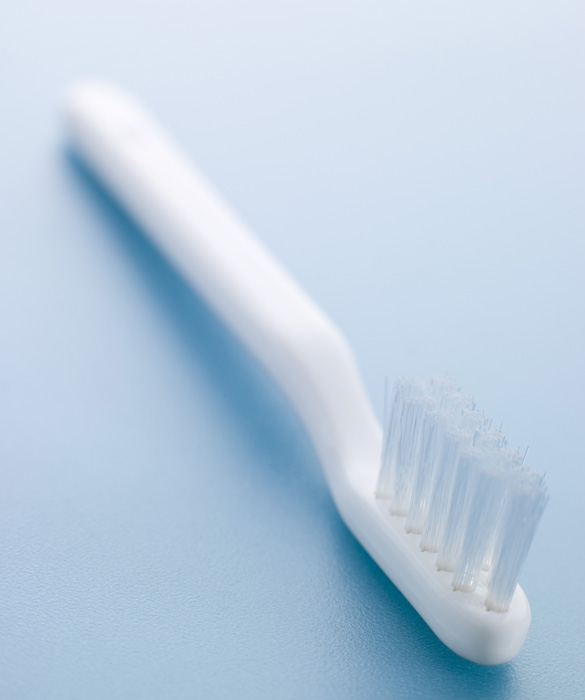
Your newborn may start to develop a scaly red abrasion on her scalp, neck, behind her ears and in her armpits. This is a common rash known as cradle cap, or seborrheic dermatitis. The condition is a build-up of extra skin, like dandruff but more oily, and is not infectious. You can treat it by using a soft-bristle toothbrush to wash the scalp or massage in olive oil, Lappe suggests. In some cases, your pediatrician may also recommend special shampoos, she adds. Eventually, the rash will disappear.
White Noise

A good investment for parents of newborns is a white noise machine or a CD of white noise, Karp says. The sound is similar to the shushing noise technique he recommends to calm a crying baby, and it works because it mimics the sounds that a baby hears in the womb before he is born. "Sounds in the womb for a baby are louder than a vacuum cleaner running 24/7, so the white noise is very reminiscent for them," Karp says.
Take Breaks
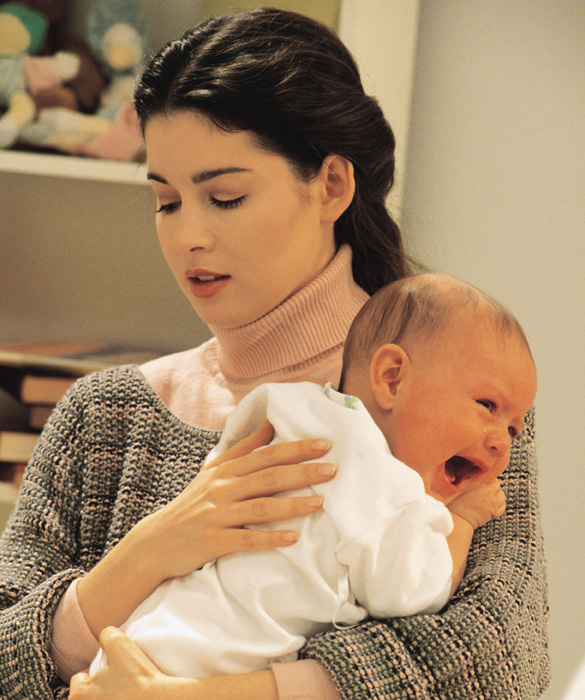
Expect that along with the joys of new parenting will come a lot of stress, compounded by lack of sleep. Remember that you are not alone; don't be shy about reaching out to friends, family or the community. Social groups for new moms and dads can help keep you sane. When stress is high, try to step back and take a break. If you can, trade off with your partner or a helper and go for a walk, or just take five minutes to breathe.
